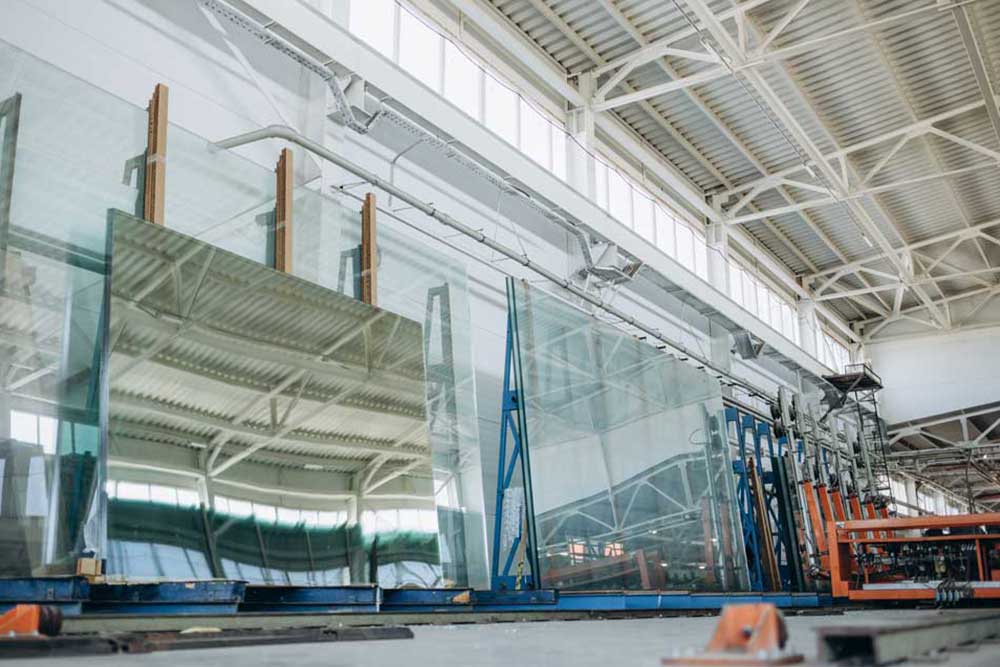Glass fabrication is an intricate process that transforms raw materials into beautiful and functional glass products. From the windows in our homes to the screens on our smartphones, glass fabrication plays a crucial role in our everyday lives. But what exactly does this process entail? Let’s dive into the world of glass fabrication and explore its various aspects in detail.
Understanding the Basics of Glass Fabrication
At its core, glass fabrication involves the cutting, shaping, and finishing of glass to meet specific requirements. This process begins with raw glass materials, which are heated to high temperatures until they become malleable. Skilled artisans and advanced machinery work together to mold the glass into desired shapes and sizes.
Transitioning from the heating phase, the glass is then cooled gradually in a controlled environment to prevent cracking. This step, known as annealing, is crucial to ensure the durability and longevity of the final product. Without proper annealing, glass can become brittle and prone to breaking.
The Heating Process
The heating process in glass fabrication is vital. Raw materials like silica sand, soda ash, and limestone are combined and heated in a furnace at temperatures exceeding 1700 degrees Celsius. This intense heat causes the materials to melt and form a molten glass mixture. Depending on the type of glass being produced, additional ingredients might be added to achieve specific properties such as color or strength.
The Shaping Process
Once the glass reaches the desired molten state, it moves to the shaping phase. Techniques vary, but all aim to achieve the precise dimensions and forms required for different applications. Here are some common methods:
- Cutting: Diamond-tipped tools score the glass surface, allowing it to break cleanly along the line. This method is efficient for flat glass sheets used in windows and mirrors.
- Grinding and Polishing: After cutting, the edges of the glass are often rough and sharp. Grinding smooths these edges, and polishing gives the glass a pristine, clear finish.
- Glass Blowing: Used primarily for artistic pieces, this technique involves blowing air into molten glass to create hollow shapes. The craftsmanship in glass blowing is remarkable, producing everything from delicate ornaments to functional glassware.
Advanced Techniques in Glass Fabrication
With technological advancements, new methods have enhanced the precision and capabilities of glass fabrication. Two notable techniques are:
- Laser Cutting: Utilizing focused laser beams, this method can achieve highly detailed cuts with minimal material waste. It’s particularly useful for intricate designs and industrial applications where precision is paramount.
- Waterjet Cutting: This technique uses high-pressure streams of water mixed with abrasive particles to cut through glass. It’s effective for cutting thick glass and producing complex shapes without the heat effects that can cause cracking.
Applications of Glass Fabrication
Glass fabrication finds applications across various industries, highlighting its versatility. In construction, fabricated glass is used for windows, doors, and facades, providing both aesthetic appeal and functionality. Automotive industries rely on glass fabrication for windshields and mirrors, ensuring safety and visibility for drivers.
In the tech world, glass fabrication is essential for producing screens for smartphones, tablets, and televisions. The meticulous process ensures that these screens are not only visually stunning but also durable and responsive to touch. Additionally, the medical field benefits from glass fabrication in the form of lab equipment and optical devices, where precision and clarity are paramount.
Quality Control in Glass Fabrication
Ensuring the quality of fabricated glass is critical. Rigorous testing and inspection processes are in place to detect any imperfections or weaknesses. This includes visual inspections for cracks or bubbles and mechanical tests to assess strength and durability. Advanced techniques like laser interferometry can detect even the slightest surface deviations, ensuring the highest quality standards are met.
Environmental Considerations in Glass Fabrication
As we become more conscious of our environmental impact, the glass fabrication industry is also making strides towards sustainability. Recycling glass plays a significant role in this effort. By reusing glass materials, manufacturers can reduce waste and conserve natural resources. Additionally, advancements in energy-efficient production methods contribute to a greener glass fabrication process.
Moreover, the industry is exploring eco-friendly alternatives to traditional raw materials. Researchers are developing new types of glass that require less energy to produce and have a lower carbon footprint. These innovations not only benefit the environment but also pave the way for a more sustainable future in glass fabrication.
Innovations and Future Trends in Glass Fabrication
The glass fabrication industry is continually evolving, with innovations paving the way for new possibilities. Smart glass technology, for instance, allows glass to change its properties in response to electrical signals, enabling applications like privacy glass that can switch from clear to opaque. Other advancements include ultra-thin, flexible glass used in cutting-edge electronic devices, showcasing the future potential of glass fabrications.
Conclusion
Glass fabrications is a fascinating blend of art and science. From the careful selection of raw materials to the precise techniques used in shaping and finishing, every step is vital to creating high-quality glass products. As technology advances and environmental concerns grow, the industry continues to adapt, ensuring that glass fabrications remains an essential and innovative field.
Whether it’s the windows in our homes or the screens on our devices, glass fabrications touches our lives in countless ways. By understanding this process, we can appreciate the craftsmanship and technology that go into creating the glass products we use every day.
For glass services that exceed expectations, Glass World can be your trusted partner. Get in touch with us today to explore our extensive range and find the ideal glass products for your projects.


